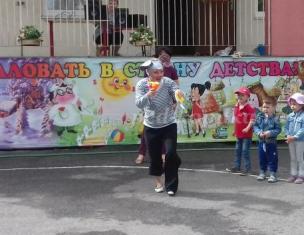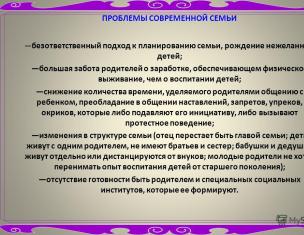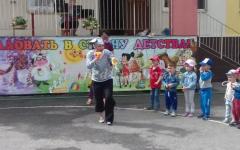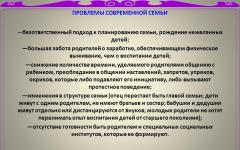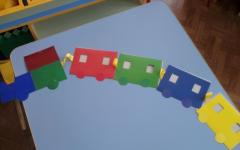Details
Children's logic can be crazy about any adult, and may have fallen on with its sharpness and accuracy. And it can be developed.
In this article you will find the most typical logic games for children from 3 to 4 years. So:
Gose the riddles - develop logic.
The game of riddles will be relevant for a child at any age. Just for each age, its level of complexity of the mysteries themselves is selected. In order to make a child riddles, do not necessarily be replaced by numerous books and benefits - fold them yourself.
Typical riddles for three years:
- "Who is it?" - Little, fluffy, loves to nibble carrots, jumps like this - "Jump jump"?
- "What is in this room?" "It's located in this room, he is big, he has doors - they can be opened and closed, the mother adds clothes there.
As you can see, the riddles for children from 3 to 4 years can successfully come up with any mom. Moreover, unlike other ways of developing logic, you can always play riddles and everywhere - on the way for a walk, standing in line, in transport. Let your riddles be not ideal as in children's books and benefits. But they are greatly developing logic, and you yourself can "configure" the level of their complexity for your child.
Who is superfluous?
A few cards are laid out before the child. It is necessary to determine which one is superfluous in meaning. Instead of cards, you can use real objects.
Here are examples of cards that I laid out on this site (clicking on the picture, you can download them):
Sequences.
In three years, you can gradually begin to learn to fold sequences.
For sequences, you can use the "Lego" constructor, figures cut out of paper (but I more like the shapes from kitchen cellulose napkins - it is more convenient to work with them), any other items.
Of course, at this age, the sequence should be very simple, and the task for the child should be to lay out one or two bricks to its continuation (if the child wants to lay out more - it is certainly welcomed!).
Examples of sequences (the child must continue the logical row - full track "Right bricks" ):
- Alternation in color.
![]()
- alternation in shape.
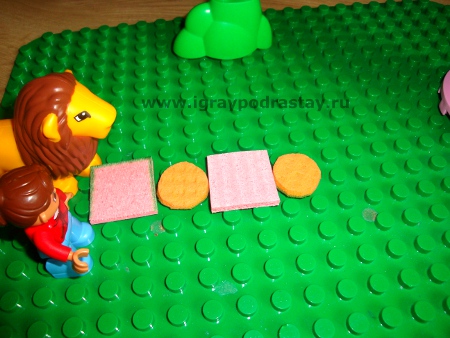
- Alternation in size.
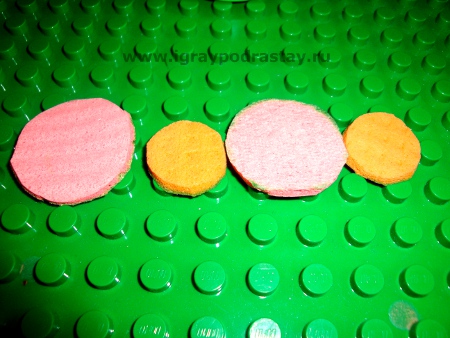
Closer to four years you can try more complex sequences.
But if you sat down most of the children before such a strip with a sequence and offer it to continue - in 80% of cases, the child will just get up and run away.
To interest children you need to come up with any short fairy tale or history.
for example:
« We decided to go through the river, but the bridge had broken. Let's help you to build bridge, but only it should be from the most correct bricks, otherwise he will quickly fall apart."(Frequently children at this age are already fond of any cartoon or fairy tale. Then the heroes that will go through the bridge must be from the beloved fairy tale or cartoon. We, for example, often build bridges so that Ellie, horrible and her friends. Could cross the river or break in the mountains).
As a sequence can also be track for the train or machine beads for doll etc.
Labyrinths.
At the age of three years, children can already be quite well able to cope with the simple task in the type "Labyrinth":
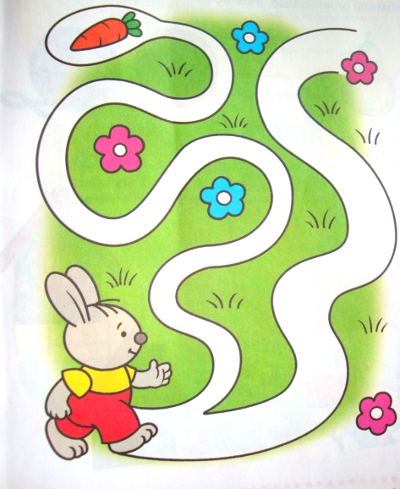
For labyrinths, it is not necessary to buy books and download benefits - they can easily draw them.
More, less, as much.
In order for the child to easily mastered these logical concepts, training is gradually (learning levels listed below are increasing complexity). First, all tasks are performed with mom. Gradually, the child will begin to perform everything independently.
So:
Level 1 is the easiest - overlay method.
In order to determine how many items - more, less or as much, the child offers them enter each other. The child will be much easier to navigate in the task, if each element for comparison will be in its "cell".
for example :
On the clearing, the beasts found delicious candy, let's check - will these candy enough?
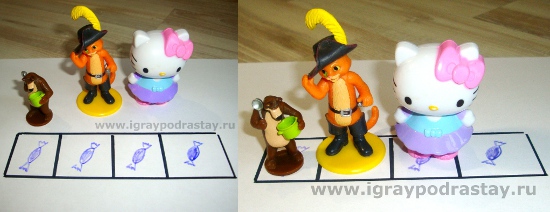
The child imposes toys on candy images. As a result, a logical conclusion is made (which is necessarily voiced) - candies are more than necessary, as much or less than animals.
Level 2 - layout method (comparison).
For this method, figures are also used, placed in cells - to easier to navigate. They are compared by laying out cards in each other.
For example:
Will the carrots enough, let's check?
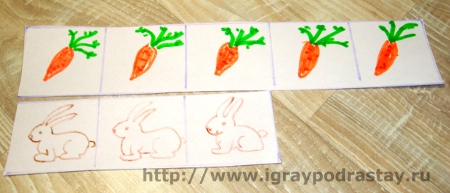
The child takes various cards (which can be easily drawn by hand) and lays out them with each other, and then makes a logical conclusion about the number of objects - "more, less, as much."
Level 3 - determining the number of objects in the group.
When the previous steps are passed, you can move to a more complex level - to determine the number of objects "to the eye". For this you can use special cards, as well as the same items.
For example:
Defined what is more, which is less?
1st level of complexity.
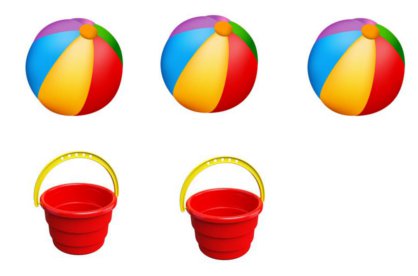
2nd level of complexity.
![]()
Level 4.
The performance of various tasks in which there are the concepts of "more", "less", "as much".
Take out of the bunch as many carrots as they will try on the clearing.
Bring more carrot raids.
Bring candies less than themselves, let them learn to share, and there is a lot of sweets, etc.
Comparison of quantity using various senses.
The concepts of "more", "as much", "less" can be studied with the help of other senses. Such games are particularly suitable for moving children (which many things are comprehended through the movement), as well as children with severe musical abilities.
The child is offered to perform tasks (tasks are indicated in the order of increasing complexity, be sure to start with the simplest):
- Hit hands (Tuben, on the drum) as much time as I hit (I always start from once, then gradually increase the number of blows).
Hit your hands (tambourine, on the drum) more than me, less than me.
- Hit hands, topney foot The same time how many items are painted in the picture. (For example, drive dogs, raven, each cotton drives one animal. At first, it is possible to close or remove the animal that the child "drove").
- Post down for each sound one toy (for example, the magic bell distributes carrots with bunas. On each beat of the bell postpone one carrot for the bunny).
- Show a cardwhere the same objects are depicted as the hammer hit.
Of course, and here you can not do without a fairy tale. In order to interest the child - invent exciting stories with his favorite heroes, the child will be very easy to turn on in the performance of tasks and with pleasure to develop their logic.
There is still a lot of interesting logical games for children from 3 to 4 years old - I plan to write about them in the very near future. In order not to miss anything interesting - follow the publications on the site or subscribe to our news on social networks.

